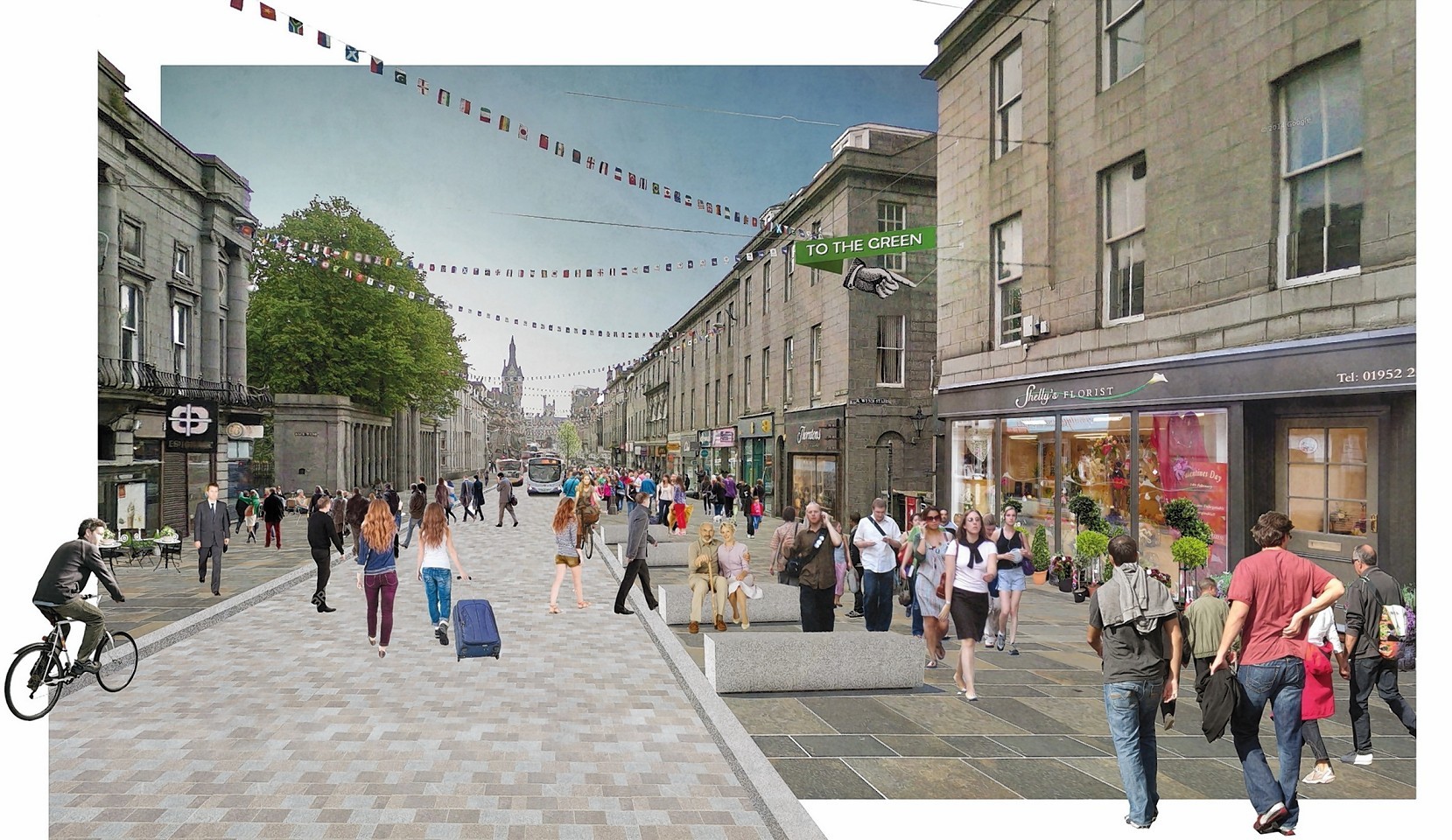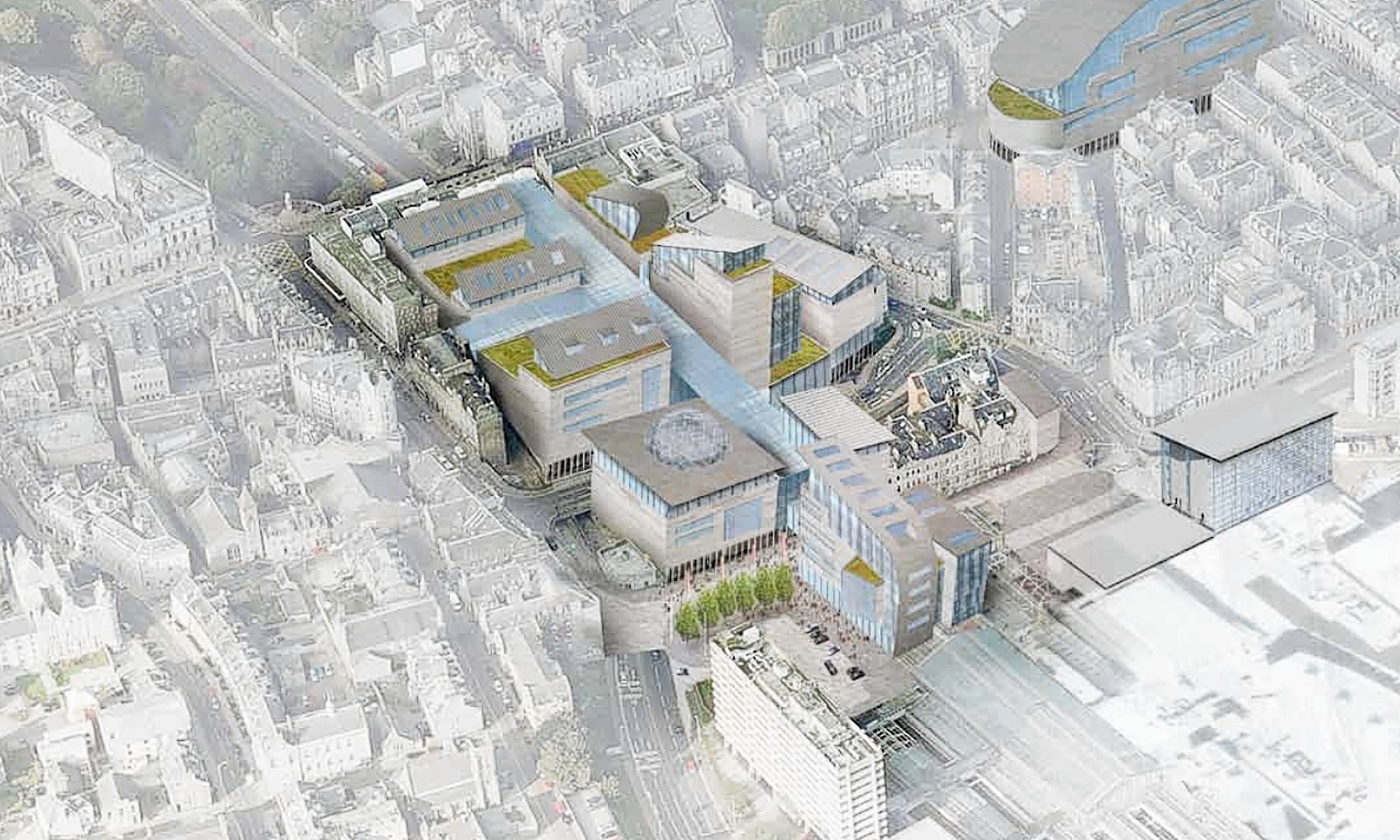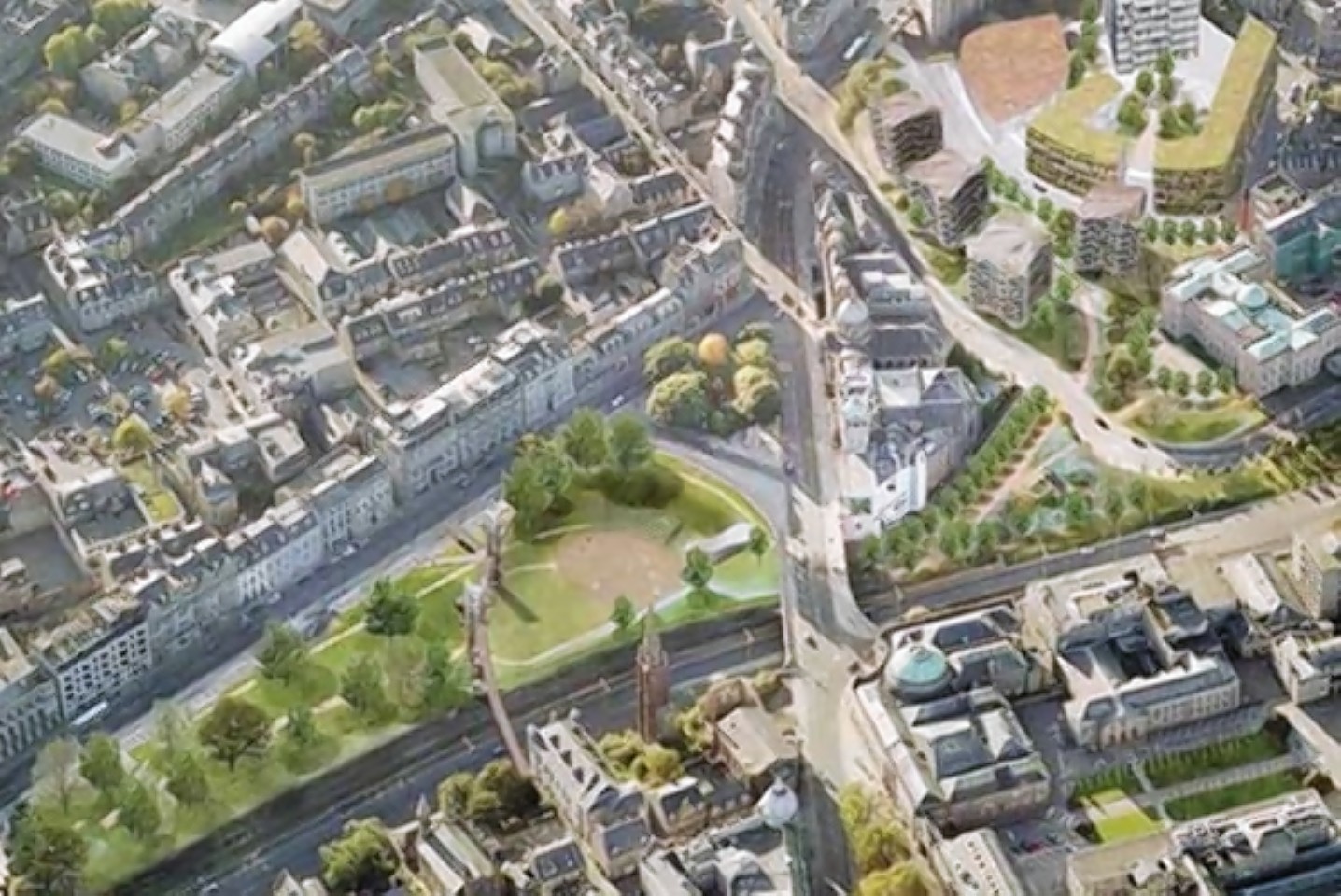Three years after the City Garden Project was rejected amid a storm of controversy the council today finally reveals its vision for breathing new life into the heart of Aberdeen.
The local authority said last night that the publication of the 95-page masterplan document was a “major step forward”, and that it would “reinvigorate” the Granite City.
But opposition councillors warned that a huge amount of work would be required to build a consensus on the proposals.
The 20-year strategy has been produced by consultants BDP following a consultation of more than 4,000 people, and will be considered by councillors next week.
Under the plans, the Castlegate would become the city’s main civic square, while half of Union Street and much of the Upperkirkgate would be pedestrianised.
Union Terrace Gardens would not be raised in the way proposed by Sir Ian Wood.
Instead, a new bridge would link Belmont Street and Union Terrace, while the park could be expanded by Her Majesty’s Theatre and Skene Street, and an outdoor amphitheatre created with stepped seating.
A new gateway would also be created to link the rail station to Union Street, while the Trinity Centre could be demolished in the long-term, and the St Nicholas Centre would be revamped to form a covered retail arcade and winter garden.
Among the dozens of other schemes put forward in the masterplan were a global energy hub, a new “urban relief road” around the city centre, the creation of an airport rail link and new train stations in the city’s suburbs.
The documents also states that there is potential to create a new commercial and residential scheme by redeveloping the extension of the city’s Town House – where councillors meet and have their offices – along with the police’s Queen Street HQ.
The Greyfriars John Knox Church – which adjoins Marischal College – could be turned into a leisure or hotel development under the plans, while a new pedestrian bridge over the River Dee could link Torry to the city centre.
The council’s Labour-Conservative-Independent administration pledged to produce plans to revamp the city centre when they rejected Sir Ian’s City Gardens Project in 2012.
It set aside £20million to rejuvenate the city centre, and in 2013 agreed to underwrite the £750,000 cost of the masterplan.
Despite the eagerly-awaited document being published on the council’s website last night, the leaders of the administration did not respond to the Press and Journal’s calls to discuss the proposals.
Councillor Ian Yuill, leader of the council’s opposition Liberal Democrat group, said: “There are a lot of schemes in there and it’s important obviously that they are all scrutinised.
“Producing a masterplan is the easy bit, the much more difficult thing is delivering it on the ground.
“As soon as the masterplan is agreed, the council must get to work to build a consensus.”
The plans will go before the full council a week today.
Conservative councillor Alan Donnelly said Sir Ian’s proposal for Union Terrace Gardens should be put back on the table.
“I think we’ve got to do some U-turns basically and eat some humble pie as far as Union Terrace Gardens are concerned, especially after the despicable photographs we saw a couple of weeks ago of people using it for needles and graffiti,” he said.
“Nothing has been done since the public vote on it. I want to see it put back on the agenda. If it means someone like me approaching Sir Ian, I would do it.
“We had a vote and we let the people of Aberdeen down.”
What the public said
Plans to revamp Union Street and Union Terrace Gardens caused the most division during a public consultation of the proposals for Aberdeen city centre.
A total 1,521 people completed questionnaires as part of the exercise, 1,182 attended information sessions, and a further 1,550 sent in feedback cards.
An analysis of the findings showed the main areas for dispute and support.
Plans to pedestrianize part of Union Street was repeatedly raised, as was a “deep concern” that the move would have a knock-on impact on traffic in other areas of the city, including Ferryhill, Holborn Street and Rosemount.
Comments on Union Terrace Gardens were said to have fallen into three categories.
The first was those who were unsupportive of the proposals because they do not go far enough in terms of reverting back to the City Gardens Project.
Second, were those who believed the proposals would go too far and would compromise the heritage of the gardens, and third from those who were generally supportive but concerned about the delivery of the changes.
Other schemes where there was “consistent concern or objection” included stricter parking standards for new city centre development the historic hospital buildings at Woolmanhill to be refurbished to create a hotel and new housing, the expansion of Bon Accord and Union Square shopping centres, and new contemporary architecture at Queen Square, North and South Dee, Denburn Valley and Guild Street.
Plans where there was said to be a high level of support included those for low cost commercial space for creative industries to be provided at Shore Porters’ warehouses, and creating more facilities for cultural and creative industries in Aberdeen.
The refurbishment and conversion of historic buildings to homes were backed for Union Street, while there was support for a local rail service and network of new stations.


